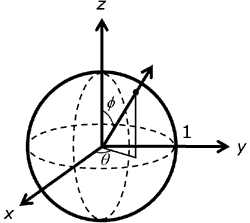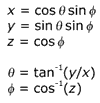Note
Access to this page requires authorization. You can try signing in or changing directories.
Access to this page requires authorization. You can try changing directories.
Note
The D3DX (D3DX 9, D3DX 10, and D3DX 11) utility library is deprecated and is not supported for Windows Store apps.
Note
Instead of using this function, we recommend that you use the Spherical Harmonics Math library function XMSHEvalHemisphereLight.
Evaluates a light that is a linear interpolation between two colors over the sphere.
Syntax
HRESULT D3DXSHEvalHemisphereLight(
_In_ UINT Order,
_In_ const D3DXVECTOR3 *pDir,
_In_ D3DXCOLOR Top,
_In_ D3DXCOLOR Bottom,
_In_ FLOAT *pROut,
_In_ FLOAT *pGOut,
_In_ FLOAT *pBOut
);
Parameters
-
Order [in]
-
Type: UINT
Order of the spherical harmonic (SH) evaluation. Must be in the range of D3DXSH_MINORDER to D3DXSH_MAXORDER, inclusive. The evaluation generates Order² coefficients. The degree of the evaluation is Order - 1.
-
pDir [in]
-
Type: const D3DXVECTOR3*
Pointer to the (x, y, z) hemisphere axis direction vector in which to evaluate the SH basis functions. See Remarks.
-
Top [in]
-
Type: D3DXCOLOR
The sky color.
-
Bottom [in]
-
Type: D3DXCOLOR
The ground color.
-
pROut [in]
-
Type: FLOAT*
Pointer to the output SH vector for the red component.
-
pGOut [in]
-
Type: FLOAT*
Pointer to the output SH vector for the green component.
-
pBOut [in]
-
Type: FLOAT*
Pointer to the output SH vector for the blue component.
Return value
Type: HRESULT
If the function succeeds, the return value is D3D_OK. If the function fails, the return value can be: D3DERR_INVALIDCALL.
Remarks
The interpolation is done linearly between the two points, not over the surface of the sphere (that is, if the axis was (0,0,1) it is linear in Z, not in the azimuthal angle). The resulting spherical lighting function is normalized so that a point on a perfectly diffuse surface with no shadowing and a normal pointed in the direction pDir would result in exit radiance with a value of 1 (if the top color was white and the bottom color was black). This is a very simple model where Top represents the intensity of the "sky" and Bottom represents the intensity of the "ground."
On the sphere with unit radius, as shown in the following illustration, direction can be specified simply with theta, the angle about the z-axis in the right-handed direction, and phi, the angle from z.

The following equations show the relationship between Cartesian (x, y, z) and spherical (theta, phi) coordinates on the unit sphere. The angle theta varies over the range of 0 to 2 pi, while phi varies from 0 to pi.

Requirements
| Requirement | Value |
|---|---|
| Header |
|
| Library |
|
See also